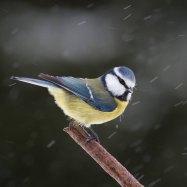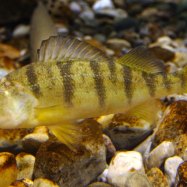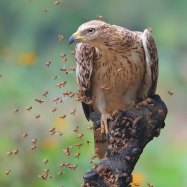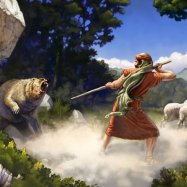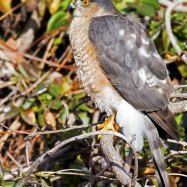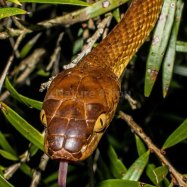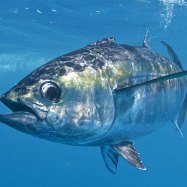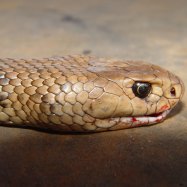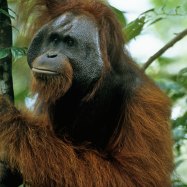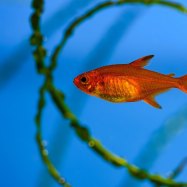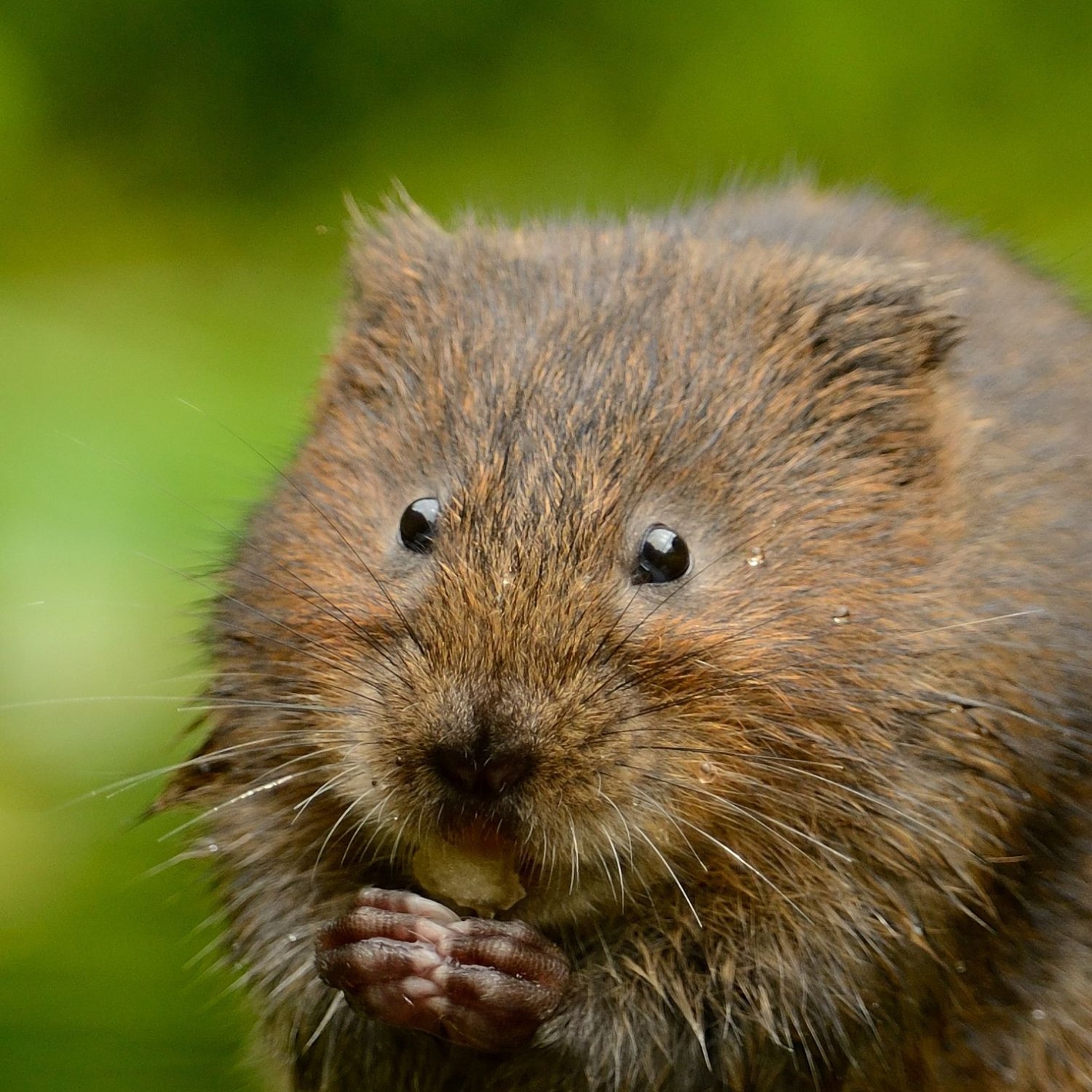
Vole
3 to 9 inches
Voles, from the Cricetidae family, are small and stout rodents found worldwide. Ranging from 3 to 9 inches in length, they are often mistaken for mice or shrews. With their round bodies and short tails, they can be found in various habitats and play an important role in the ecosystem. Keep an eye out for these adorable creatures on your next outdoor adventure! #voles #rodents #cricetidae #naturelovers
Animal Details Summary:
Common Name: Vole
Kingdom: Animalia
Habitat: Grasslands, forests, wetlands
The Adorable Vole: A Tiny But Mighty Creature
The animal kingdom is full of fascinating creatures, big and small. From majestic lions to chirpy birds, each one holds its own unique charm. Among these diverse creatures is one that may not be as commonly known but is equally captivating – the vole.With its scientific name Microtus and a common name that simply states its true identity, the vole may seem like an unassuming rodent at first glance Vole. However, upon closer inspection, one can discover that these rodents are anything but ordinary. Let's dive into the world of voles, from their habitat and distribution to their remarkable features and behavior.
Classification
Before we get into the details about this creature, let's first take a look at where voles stand in the animal kingdom. They belong to the kingdom Animalia, which comprises all animals on earth. They are part of the phylum Chordata, meaning they possess a spinal cord, and the class Mammalia, which classifies them as mammals.Within the order Rodentia, which includes all rodents, the vole belongs to the family Cricetidae. This family is further divided into several subfamilies, and the vole belongs to the subfamily Arvicolinae, also known as the "arvicoline voles."
Habitat and Distribution
Voles are found in a wide range of habitats, from grasslands to forests and wetlands. They are even known to adapt to urban areas and make their homes in gardens or parks Vegavis. They have a diverse geographical distribution, with a presence in North America and Eurasia.Specifically, voles are native to Canada, the United States, Europe, and Asia. While they are widespread among these regions, their presence may vary depending on the species and their specific habitat requirements.
Appearance
The physical appearance of voles is as diverse as their habitat and distribution. They can range in coloration from shades of brown to gray, with some species even having a reddish tint. This allows them to blend well with their surroundings, making it easier for them to hide and escape from predators.One of the most remarkable features of voles is their body shape. These small mammals are stout and compact, measuring only 3 to 9 inches in length. They have short legs and small eyes, but their most prominent feature is their constantly growing front teeth. These sharp incisors are perfect for gnawing through tough vegetation, their primary source of food.
Feeding Method
As mentioned earlier, voles are herbivores, meaning they feed on only plants. Their diet usually consists of grasses, roots, seeds, and other vegetation found in their habitat. They have a high metabolism that requires them to eat frequently, even consuming up to three times their body weight in a day.Due to their small size, voles are susceptible to predation by various animals, including snakes, birds of prey, and even domestic cats and dogs. This is why they spend most of their time hidden underground, in tunnels or burrows, which also act as protection from harsh weather conditions.
Behavior and Adaptations
Voles are social animals that live in colonies, unlike some solitary rodent species. They are active both during the day and at night, but their activity varies depending on their specific habitat. For example, voles living in a grassland may be more active during the day, while those in a woodland may prefer night time.One unique adaptation of voles is their reproduction strategy. Unlike most rodents, which have many litters in a year, voles usually have only one or two litters. However, each litter can have up to 11 offspring, making them highly successful as a species.
Moreover, voles have an impressive ability to swim, an adaptation that enables them to escape floods or move to new habitats. They are also skilled at tunneling and can create an extensive network of burrows to navigate through their environment safely.
Importance in Nature
Although they may seem small and insignificant, voles play a crucial role in their natural ecosystem. As herbivores, they help control plant growth, keeping vegetation in check and maintaining a balance in their habitat.Voles are also essential prey for numerous predators, creating a food chain and contributing to the overall health of the ecosystem. They also help improve soil quality by continuously tunneling and moving soil, which helps with nutrient cycling.
Conservation Status
As a whole, voles are not considered to be endangered species. However, some specific species may face threats to their population due to habitat loss or human activity. For example, voles living in urban or agricultural areas may be at risk due to pesticide use, which can poison their food sources.In some regions, conservation efforts are in place to protect certain vole species and their habitats, ensuring their survival in the wild. These efforts include creating proper management plans and establishing protected areas to preserve their natural habitat.
Voles and Humans
The relationship between voles and humans is somewhat complex. On one hand, they are seen as a nuisance for farmers and gardeners due to their tendency to feed on plants and cause damage to crops. They can also be problematic for homeowners because their continuous burrowing can damage lawns and gardens.However, on the other hand, voles have been used for scientific research and have contributed greatly to our understanding of genetics and behavior. They have also been used as a food source in various cultures, particularly in China and Russia, where they are considered a delicacy.
In Conclusion
In conclusion, despite their small size, voles are truly remarkable creatures. From their diverse habitats and wide distribution to their unique adaptations and behavior, they are an essential part of the natural world. As we continue to learn more about them, we can foster a greater appreciation for these tiny but mighty creatures. So next time you see a vole scurrying through your garden, take a moment to admire its beauty and contributions to our planet.

Vole
Animal Details Vole - Scientific Name: Microtus
- Category: Animals V
- Scientific Name: Microtus
- Common Name: Vole
- Kingdom: Animalia
- Phylum: Chordata
- Class: Mammalia
- Order: Rodentia
- Family: Cricetidae
- Habitat: Grasslands, forests, wetlands
- Feeding Method: Herbivore
- Geographical Distribution: North America, Eurasia
- Country of Origin: Canada, United States, Europe, Asia
- Location: Various
- Animal Coloration: Brown, gray
- Body Shape: Small and stout
- Length: 3 to 9 inches
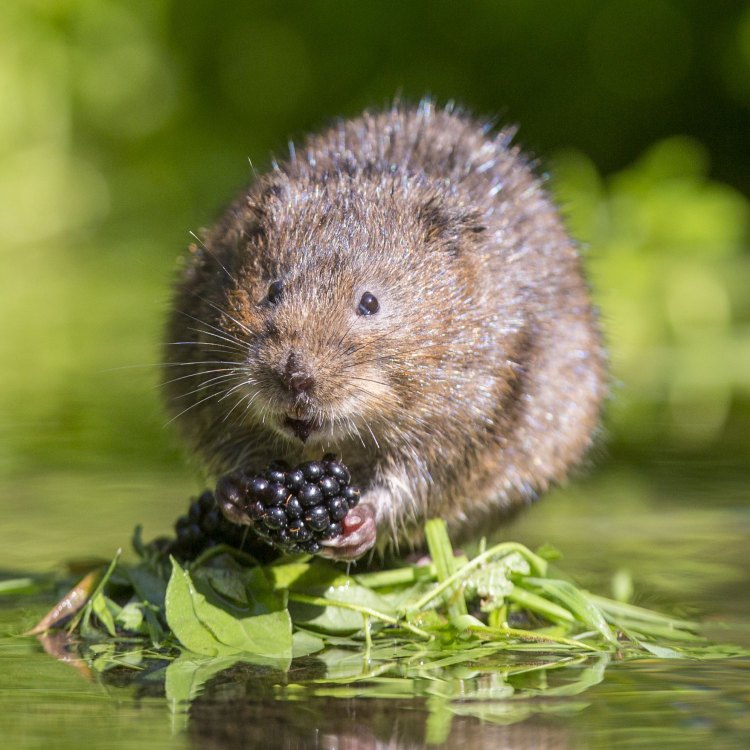
Vole
- Adult Size: 3 to 9 inches
- Average Lifespan: 1 to 3 years
- Reproduction: Sexual
- Reproductive Behavior: Polygamous
- Sound or Call: High-pitched squeaks
- Migration Pattern: None
- Social Groups: Solitary
- Behavior: Territorial
- Threats: Habitat destruction, predation
- Conservation Status: Least Concern
- Impact on Ecosystem: Important prey species
- Human Use: None
- Distinctive Features: Short tail, small ears
- Interesting Facts: Voles are excellent burrowers and build extensive tunnel systems underground.
- Predator: Owls, hawks, snakes, foxes
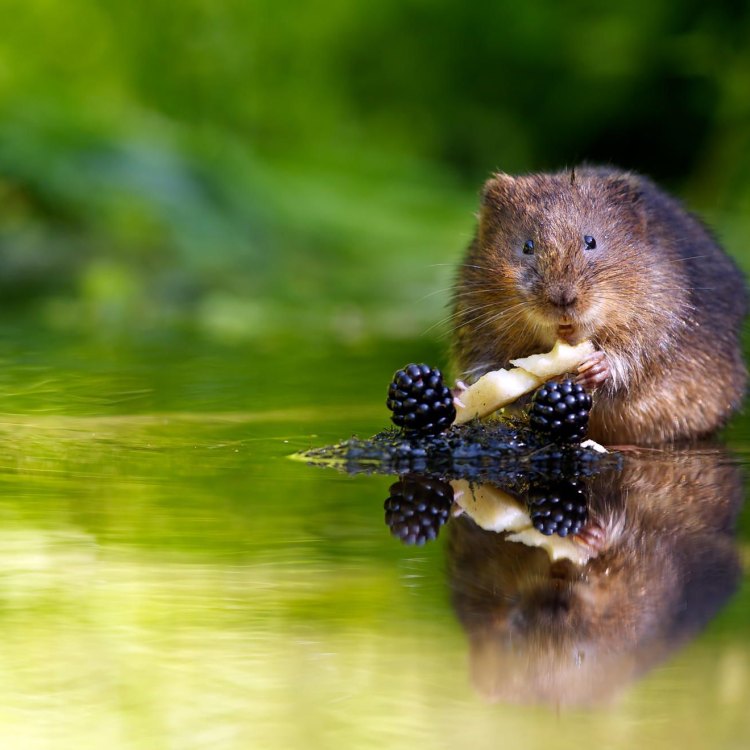
Microtus
The Fascinating World of Voles: Small Creatures with a Big Impact on Ecosystems
When we think of small animals, we often overlook the important role they play in maintaining the balance of ecosystems. One such animal is the vole, a small and unassuming rodent with a big impact. From their unique features to their behavior and conservation status, let's dive into the fascinating world of voles.What is a Vole?
At first glance, a vole may look like an ordinary mouse or rat PeaceOfAnimals.Com. However, these tiny creatures belong to the family Cricetidae, which also includes hamsters and lemmings. Voles are small, stocky rodents with short legs, small ears, and a short tail. They are typically between 3 to 9 inches long and weigh anywhere from 1 to 6 ounces.
Life Cycle and Reproduction
Voles have a relatively short lifespan, living on average for 1 to 3 years in the wild. They reach sexual maturity at around 6 weeks of age and can reproduce throughout the year. Voles are known for their promiscuous behavior, with males often breeding with multiple females. This makes them polygamous, meaning they have multiple mates.
Their mating ritual begins with the male chasing the female in high-speed chases, often accompanied by high-pitched squeaks. Once the female is pregnant, which typically lasts for 3 weeks, she will give birth to a litter of 3 to 8 pups Viper. These pups are born blind and hairless, relying solely on their mother for survival.
Solitary Social Groups and Territorial Behavior
Unlike other rodents such as rats and mice, voles are solitary animals. They prefer to live and forage alone, only coming together during the breeding season. They are also territorial creatures, with each vole having its own designated area for hunting and gathering food.
Threats to Voles and Their Conservation Status
Voles may be small, but they face various threats in their natural habitats. Habitat destruction, often caused by human activities like deforestation and urbanization, is a significant threat to these tiny animals. As their homes and food sources disappear, so do voles.
Predation is also a significant threat to voles. They are preyed upon by a range of predators, including owls, hawks, snakes, and foxes. To protect themselves, voles have developed a keen sense of hearing, allowing them to detect predators from far away. They also have the ability to camouflage themselves, making it difficult for predators to spot them.
Despite these threats, the International Union for Conservation of Nature (IUCN) has listed voles as a species of 'Least Concern.' This means that voles are not considered endangered, and their population is stable. However, ongoing monitoring and conservation efforts are essential to ensure their survival in the face of these threats.
The Importance of Voles in Ecosystems
Voles may be small and seemingly insignificant, but they play a critical role in maintaining the balance of ecosystems. They are important prey species for a variety of predators, making them a vital part of the food chain. Without voles, the populations of their predators, such as owls and foxes, would be adversely affected.
Moreover, voles are excellent burrowers, building extensive tunnel systems underground. These tunnels aerate the soil, helping to regulate moisture levels, and also provide a safe place for other small animals, such as shrews and snakes, to live. Therefore, the presence or absence of voles can significantly impact the entire ecosystem.
The Unique Features of Voles
While voles may look similar to other rodents, they have some unique features that make them stand out. One distinctive feature is their short tail, which is less than half the length of their body. This short tail distinguishes them from other rodents, such as mice and rats, which have longer tails.
Voles also have small ears, which may seem insignificant, but they play an essential role in their survival. As they are solitary and vulnerable to predation, their small ears help them stay hidden and avoid detection from predators.
Interesting Facts About Voles
Besides their unique features and behavior, there are several interesting facts about voles that many may not know. For instance, did you know that voles are excellent swimmers? They can swim long distances, in some cases up to half a mile. They have been observed swimming across lakes and streams in search of food and new territories.
As mentioned earlier, voles are excellent burrowers, and they use their sharp claws and teeth to dig extensive tunnel systems underground. These tunnels can be up to several feet long and often have multiple entrances and exits. They even have underground nesting chambers, where they can raise their young in safety.
The Absence of Human Use of Voles
Unlike other animals, voles have little to no use for humans. They are not kept as pets or used in any commercial products. Therefore, humans have no direct interaction with these creatures. However, humans can impact voles' populations through various activities, including habitat destruction and pollution, which ultimately affect their survival.
Final Thoughts
In conclusion, voles may be small, but they have a significant impact on ecosystems and play a vital role in maintaining balance and biodiversity. They face various threats in their natural habitats, but their population is currently stable. As responsible inhabitants of this planet, it is essential to protect and preserve voles and their habitats for the overall health of our planet. By appreciating and understanding these tiny creatures, we can ensure their survival for generations to come.
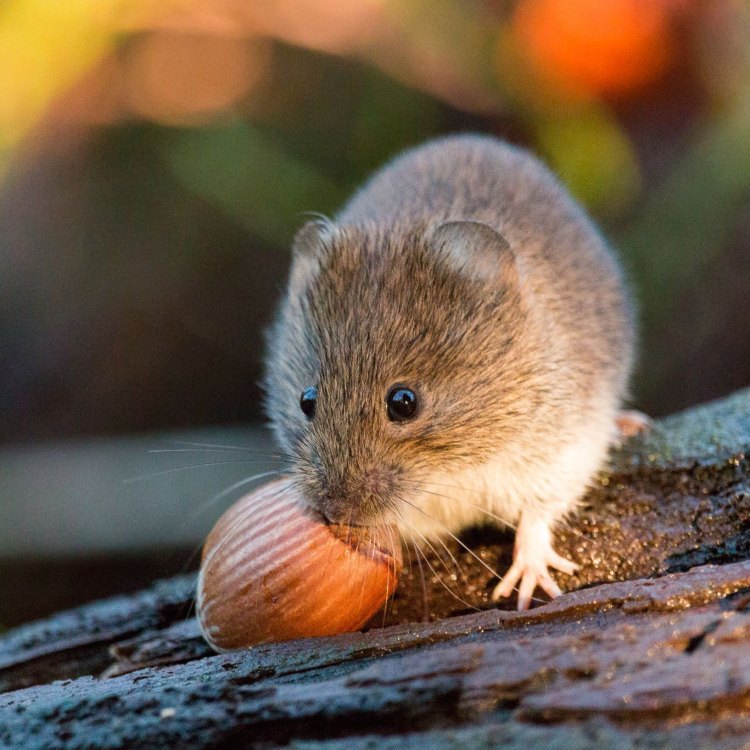
The Adorable Vole: A Tiny But Mighty Creature
Disclaimer: The content provided is for informational purposes only. We cannot guarantee the accuracy of the information on this page 100%. All information provided here may change without prior notice.

